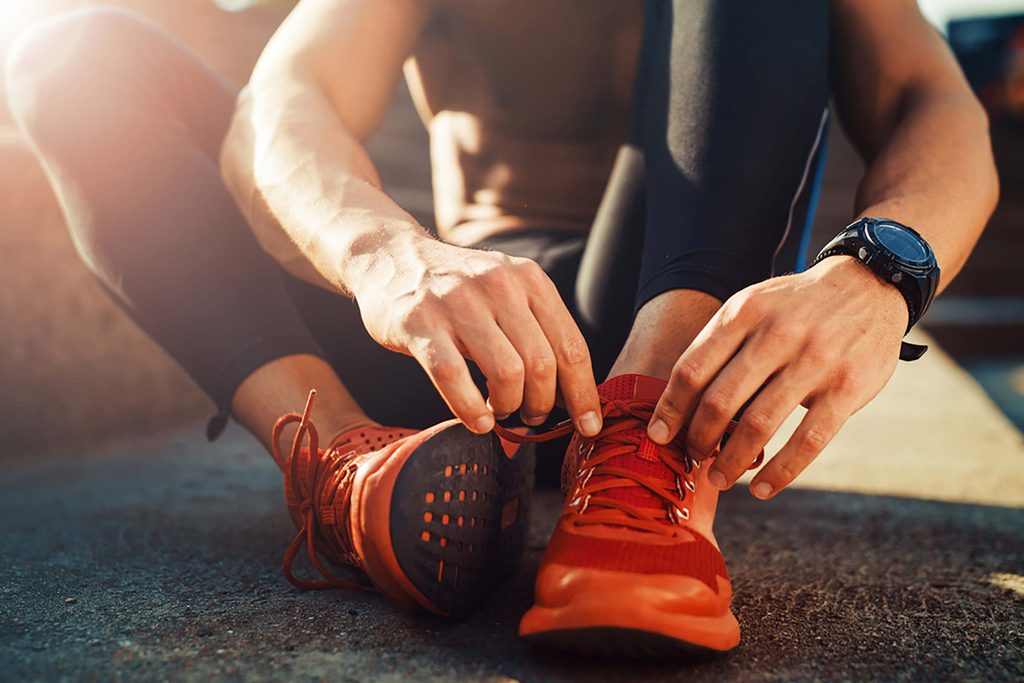The Only Question You Need to Ask to Find the Best Running Shoes
Updated: Sep. 28, 2017
Turns out, finding the right running shoe is easier than you think. Read on to find out how to find the best shoe for you, according to science.
 It sounds too simple to be true, but in a research review published in 2015, a team of researchers looked at decades of studies on running shoes and injury prevention. You may not even realize how many ways your shoes are ruining your workout. In their research, they found only one good predictor of whether a running shoe could reduce injury risk: comfort. When you ignore what your body is telling you or try to overcorrect for things like pronation, it may lead to injury. So the next time you head to the store to buy a new pair of running shoes, ask yourself, “Is this shoe comfortable?” But what exactly does “comfort” mean when it comes to a running shoe?
It sounds too simple to be true, but in a research review published in 2015, a team of researchers looked at decades of studies on running shoes and injury prevention. You may not even realize how many ways your shoes are ruining your workout. In their research, they found only one good predictor of whether a running shoe could reduce injury risk: comfort. When you ignore what your body is telling you or try to overcorrect for things like pronation, it may lead to injury. So the next time you head to the store to buy a new pair of running shoes, ask yourself, “Is this shoe comfortable?” But what exactly does “comfort” mean when it comes to a running shoe?
“Contrary to popular belief, comfort does not and should not always mean more cushion,” says Eric Orton, author of The Cool Impossible and the coach in Christopher McDougall’s cult read Born to Run. “I have found that flexibility in the mid/outsole plays a big role in comfort, allowing the foot to act more natural.” Orton notes that runners who are more flat-footed tend to find more comfort in outsoles that are flat on the bottom, whereas runners with a higher arch, usually find better comfort in a shoe that has a “cut out” section in the outsole under the arch/middle of the foot. “With that said, a flat-footed runner might find that less cushioned shoes are more comfortable because their lower profile will better help stabilize their feet,” he says. “The arched runner might experience the opposite.”
Cara Ann Senicola, PT, DPT, OCS, USATF-L1, CYT and an orthopedic specialist at the Hospital for Special Surgery agrees: “Always checkout the bottom of the sneaker. It should look like the runner’s foot shape.” Senicola adds that some toe boxes are wider than others, so if you have a wide foot, make sure to choose a wider toe box. You’ll also want to make sure the toe box is tall enough to let toes move naturally. “A high toe box height allows the toes to move up and down, with the natural flex in toes during run gait,” Orton explains. “If the toe box height is too low, this inhibits the toes’ natural up and down toe movement which can cause discomfort, especially in your shins, without you realizing why.”
You also want to have room between the top of the shoe and where your toes end. How much room depends on the distance you’re running and if you run mostly flat terrain versus hilly terrain. “With very hilly terrain, the runner might need to size up half a size to allow for good foot flex running up hills and enough room to move when running down,” Orton says.
Overwhelmed? Don’t be! Most running stores can help guide you through this process and will often offer to film you running. “I would highly recommend shopping for sneakers in typical running gear (tights, socks, etc) and try jogging a little in a few sneakers recommended by someone who works at a running store before making a final purchase,” Senicola says. Now that you’ve got your shoe problem figured out, here are the common running mistakes you don’t know you’re making—and should probably fix ASAP.
